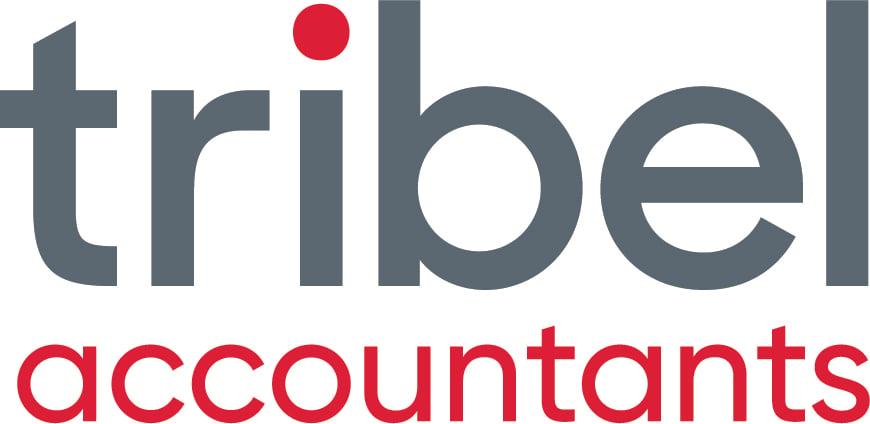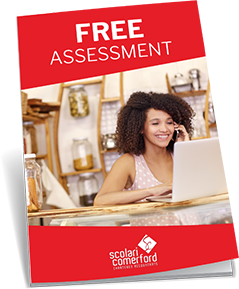INTRODUCTION:
Preparing a cash flow forecast need not be a mundane task. Whenever I suggest to a small business owner that forecasts can be a wonderful planning tool and a very interesting project, I often get puzzled looks as if there might be something wrong with me!
Personally, I find the whole process a great challenge as it will confirm or deny whether the business I am looking at is going to hits its eventual targets financially. If it's not, what things need to happen to get the final desired result?
Typically the bottom line predicted will not be enough and usually will require some kind of business growth strategy when considering its business planning sessions.

Figure 1: Peas In A Pod - 3 way budgets should go hand in hand with any business plan.
1. start with last year's financial statements
The usual starting point when sitting down to work out your cash flow and budget is to get last year's financial statements from your accountant.
If these have been completed accurately, they should give you clues as to what your business has been doing performance wise.
Firstly, look at the profit for the year. Are you happy with that? If you are, then you just need to make sure you have a strategy in place for the coming year to ensure you achieve at least the same result. You would need to consider whether there was anything unusual in either income or expenses which may not be there in the next 12 months. Will costs be the same and what about sales and gross profit margins? Has the market place changed due to new products or services or competitors or even technology?
If you aren't happy with the result after any unusual items that may have occurred, determine what mix of quantities of products and/or services you would need to sell to improve the bottom line.
Keep doing what-if scenarios with income, gross profit margins (don't forget to adjust last year's overheads for any increased revenue activity that may be required). For example, more advertising or more salaries may need to be factored in.
Can you improve the gross profit margin percentage? Maybe you need to source cheaper suppliers or go out to tender and seek quotes?
Can your overheads be 'pruned'? Is there any waste in there? You need to do a review and consider ways of becoming more efficient. Maybe outsourcing labour might be an option or investing in machines or technology that will assist your operation to run more leanly? Look at what the best people in your industry are doing and consider doing likewise. Remember, success leaves clues.
Once you have worked out a level of revenue, expenses and profit you would like to hit, you have got the first part done in that you have prepared your profit and loss budget.

Figure 2: Review last year's figures for clues. Can you see what they are trying to tell you? Photo courtesy of Lara Scolari Gallery
2. run some key performance indicators that will aFFECT CASH
It's one thing to do a profit and loss budget but how will this convert to cash? Will you have enough funds to generate the extra revenue or might you run out of money in the process?
Get your balance sheet and run some key performance indicators.
How long on average are you taking to get paid? What are your inventory days? How soon do you have to pay suppliers from the date of their invoice?
Using the existing ratios, work out whether you are going to have enough cash to fund your profit and loss growth.
From your profit and loss budget, start with what you had in the bank at the start of the year, less payments for what you owed and then work out expected incomings and outgoings for the rest of the year. Remember you will have stock on hand at any one point as well as monies owed to you and monies owing out to your suppliers.
Factor in any dividends/drawings into the forecast as well as any principal loan repayments (interest will shown in your profit and loss budget).
You have now completed your cash budget.
3. develop strategies to improve key performance indicators
You should by now have a picture of what you want your bottom line (profit) to look like and also whether you are going to have enough cash throughout the year and at the end of the year. If you would like to get really fancy you might want to consider using software such as Castaway which produces a 3 way budget (profit and loss, balance sheet and cash flow forecasts) all at the push of a button as they factor in your key performance indicators. Your accountant or business advisor should be able to help you if you do not wish to invest and learn this type of software yourself as most would have this tool in their armoury.
If you don't have enough cash you need to consider all of the following:
- Change trading terms;
- Improve inventory days by holding less stock;
- Negotiate better supplier trading terms;
- Seek further finance from your bank;
- Reduce dividends/drawings.
Redo your forecasts based on changes to any of the above. Does it fix the problem?

Figure 3: Get together and discuss ideas to improve cash at bank and business performance.
4. work on growth STRATEGIES TO hit higher revenue targets
Of course, once you have completed your desired outcomes in terms of business profit and cash, you need to have a plan to make the higher revenue targets happen. This is commonly known as a business growth strategy and will form part of your business plan.
So you have set your revenue goals. What do you need to do to change and increase income?
Look at:
- Number of leads in each day/week/month;
- Can these be increased by looking at alternative markets, better advertising or a point of difference approach?
- What is current conversion rate into sales? Can this be improved by better sales training (scripting and role playing)?
- What is the average customer spend? Is there a 'would you like fries with that' option?
- How many times does the customer transact with us? Can we get them to come back more often (loyalty schemes, promotions etc).
You need to be across these numbers. If you can't currently get these, then you need a system that will let you track these. Most accounting packages have enough information for you to work this out. Cloud accounting software providers such as Xero would be well worth investigating.
CONCLUSION:
Well I hope this approach to preparing budgets has been useful. Remember that performing these properly make sure that you are aiming for a result you will happy with and give you with an end point that you can work backwards with to make it all happen. A budget that is just add 10% to last year's profit doesn't mean anything to anybody in most cases and there will be no implementation plan to effect the desired change.
Cash flow forecasts = better planning = more profits = better cash flow = better small business valuation.


.png?width=100&height=100&name=COVID_Safe_Badge_Digital%20(002).png)




